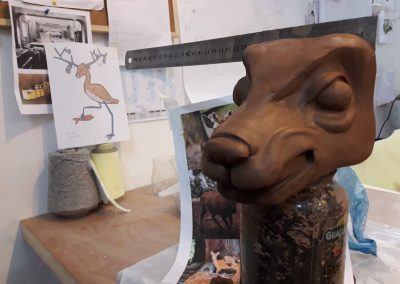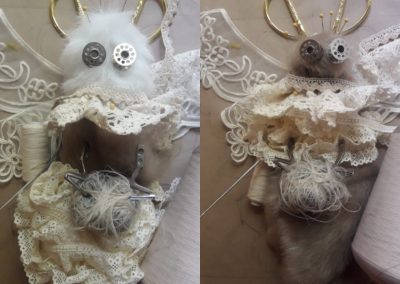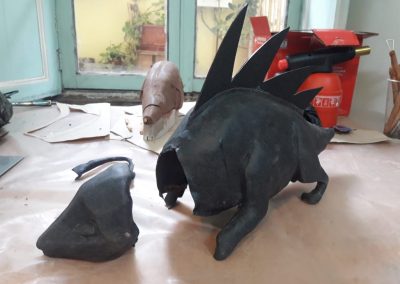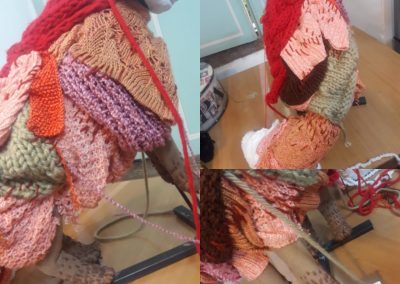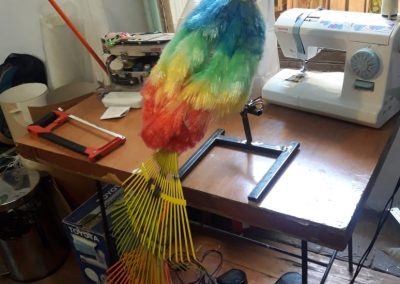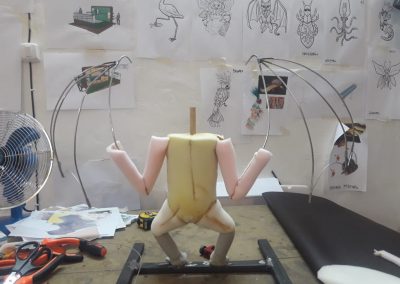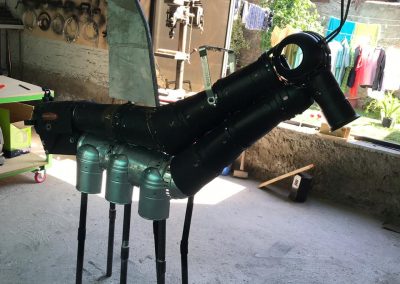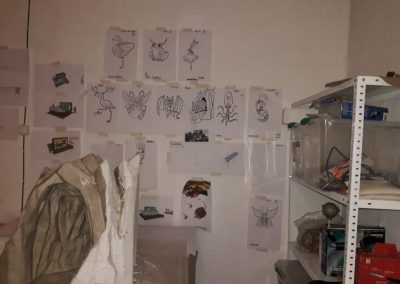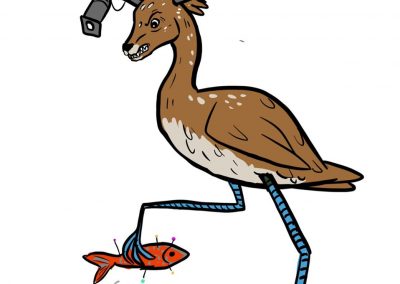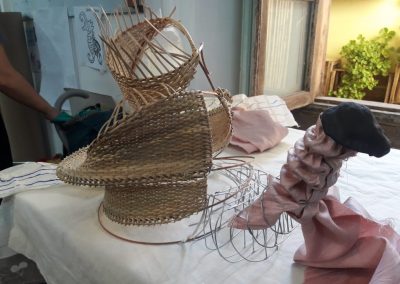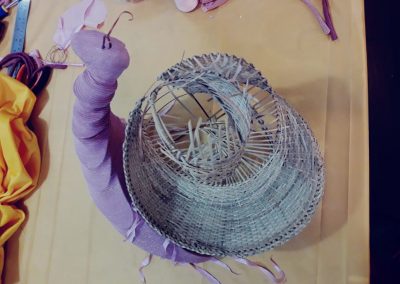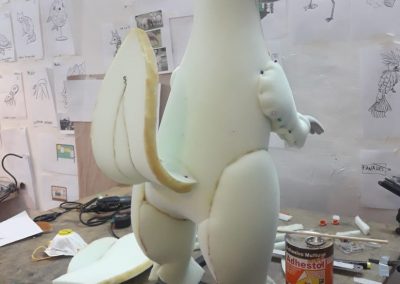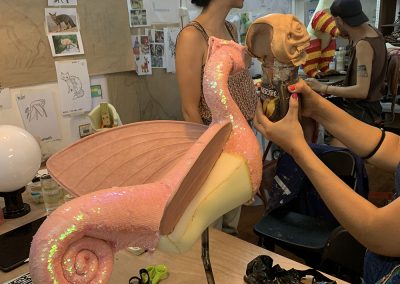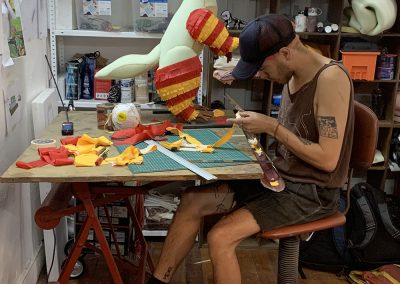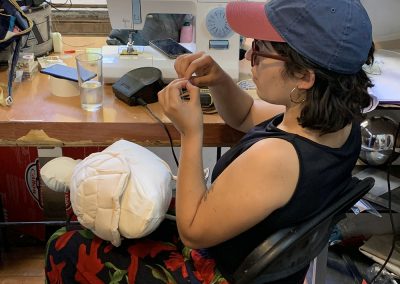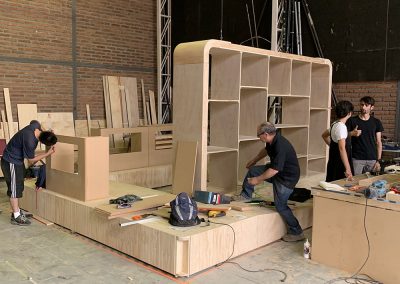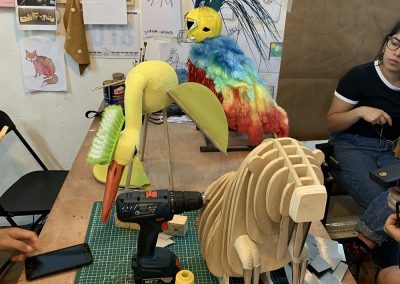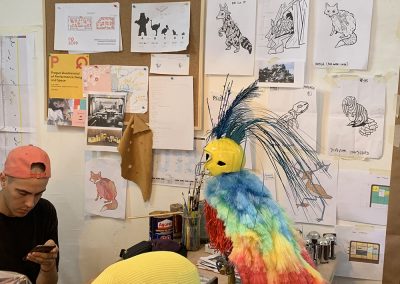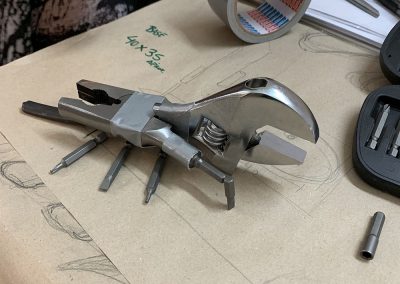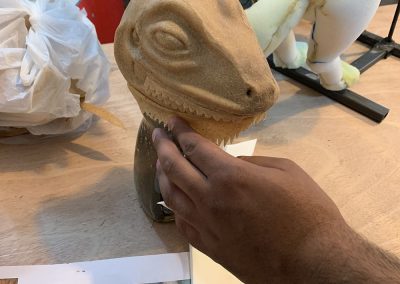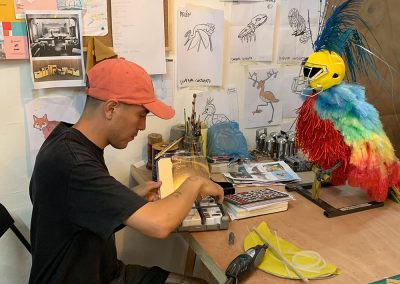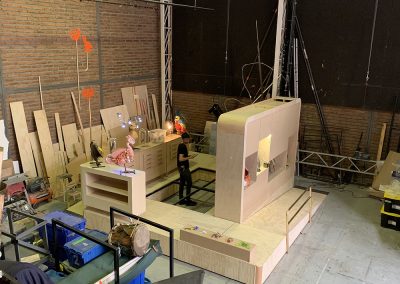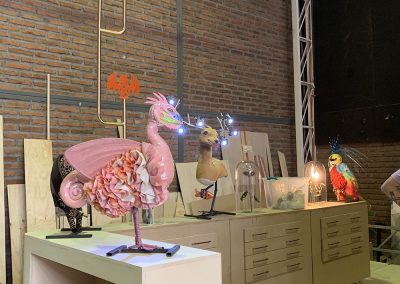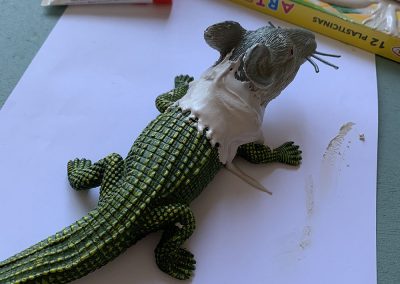Proceso
Process
Luego de armar el equipo, pasamos a selección de los profesionales del diseño escénico que serían exhibidos en la instalación. El altísimo nivel de nuestra disciplina en Chile. hace que no sea fácil la tarea escoger sólo a algunos; pero creemos que nuestra exhibición reúne un amplio y diverso número de profesionales que han dedicado su vida a las artes escénicas. Una vez recopilados, comenzó el proceso de diseño, en el que nos inspiramos en el trabajo de cada artistas para imaginar sus versiones monstruosas.
Una vez plasmadas en papel, comenzó el proceso de realización de las criaturas, divididas en dos secciones. La sección de Falsas Taxidermias fue encabezada por Jocelyn Olguín, diseñadora escénica especializada en realización, que logró armar un equipo que trabajó minuciosamente en la creación de los variados y asombrosos animales que hoy llenan los estantes. Fue un proceso de mucha investigación material y técnica, pues cada criatura tenía requerimientos únicos y especiales. Al mismo tiempo, otro número de monstruos fueron llevados al papel gracias al talento del ilustrador chileno Gianfranco Giordano.
Mientras las criaturas comenzaban a ver la luz, el realizador escénico Guido Reyes, construía la estructura base de nuestra instalación, la que fue terminada con las piezas en metal hechas por el equipo de Amor Escénico. Al mismo tiempo, Fernando Milagros, connotado músico chileno –y diseñador teatral de formación- le dio vida al universo sonoro de la instalación.
El proceso completo de Monstruos Menores ha sido realizado con mucha dedicación, entrega, y la convicción de estar aportando a la visibilización de una disciplina tan poco reconocida en Chile y el mundo.
The implementation of the Minor Monsters project consisted of several stages. The first one was gathering the team. We are very proud to have brought together such a talented and renowned group of artists and theater workers, (most of them stage designers), to the development of each of the different areas of the exhibition, bringing the exhibit to the level it deserved to have.
After setting up the team, we went on to selecting which stage design professionals would be shown in the installation. It was not an easy task, given the excellence of the discipline in Chile; nevertheless, we do believe that we have successfully compiled a broad and diverse group of professionals that have dedicated their lives to the Performing Arts. Once the selection had been made, we began the design process, where we took inspiration from artists’s work for the creation of their monstrous alter-egos.
Once we had them down on paper, we began the process of manufacturing the creatures, which was divided into two sections. The Fake Taxidermies were led by Jocelyn Olguín, stage designer specializing in manufacturing. She was able to gather a team that worked to great detail in the creation of the various and stunning animals that we now see on these shelves. It was a process that involved a great deal of research in regards to the materials and technical aspects: for each creature had its own unique and special requirements. Simultaneously, another group of monsters was brought onto paper thanks to the talented Chilean illustrator Gianfranco Giordano.
While the creatures were beginning to see the light of day, theatre carpenter, Guido Reyes began building the base structure for the installation. It was finished off with metal pieces made by the Amor Escénico team. At the same time, the renowned Chilean musician, Fernando Milagros -who is a trained stage designer himself- brought the installation’s universe of sound to life.
The entire Minor Monsters project has been carried out with the utmost dedication, commitment and belief that we are making a contribution to the visibility of a profession that is, so often, under acknowledged in Chile and the world.


